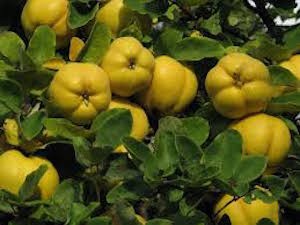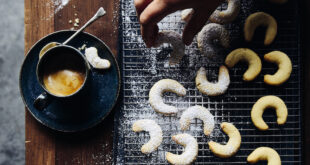 Quinces around the country should be laden with fruit as autumn approaches. While they look and smell wonderful, quinces are great for eating raw, but they are just amazing in jellies and chutneys. Quince trees are hardy and deciduous and grow in many climates.
Quinces around the country should be laden with fruit as autumn approaches. While they look and smell wonderful, quinces are great for eating raw, but they are just amazing in jellies and chutneys. Quince trees are hardy and deciduous and grow in many climates.
If you are looking to add fruit trees to your garden, consider a quince – they form an attractive umbrella shape and the average mature size for a quince tree is around 3 to 4 metres.
Quince trees are generally planted during the winter months. This is when ‘bare root’ trees (saplings with soil washed off their roots) are available at nurseries. Quince trees are also sold as container grown plants. They will grow in a wide variety of soils but for best results they should be planted in a fertile, well-drained soil. Sandy soil is improved with the addition of rotted compost.
Tips for growing quinces
- Always prune during winter when the tree is dormant and be sure to remove any dead, diseased or otherwise damaged stems.
- It is a good idea to also remove any rubbing stems that are crossing each other and opening up wounds.
Let in light and to promote good air movement through the tree by removing stems that are crowding the centre of the tree, when it is in full leaf during summer. This helps to prevent fungal disease from taking hold. - Remove any shoots from the base or lower stem of the tree.
- Help create the umbrella shape by removing any stems that are growing vertically from main branches. Cutting out the centre stem on young trees generates a more umbrella-shaped tree that makes picking fruit easier as they are lower down.
- Water around the base of your quince tree in dry weather, making sure that soil gets enough water for roots to be fully soaked.
- Mulch around base of newly-planted trees, especially if you have sandy soil. Cover a circle as wide as the spread of the branches with a finger-deep layer of compost, rotted manure or old straw and replenish mulch when necessary. Keep the mulch just free of the stem of your tree as this can cause it to rot.
- Plant borage, comfrey, dill and fennel beneath mature trees to draw nutrients from deep in the soil and to attract beneficial pollinating and predatory insects.
Once you have a healthy quince harvest, here is a great recipe for quince paste – it is a delicious addition to any cheese platter!
Spiced quince paste
three large quinces, peeled, cored and chopped into 2cm cubes. Reserve the seeds (they will make the paste a deeper pink)
¼ cup water
one whole vanilla bean (not scraped, leave it whole – you only want a hint of flavour)
four cardamom pods, slightly bruised
two star anise
raw sugar
Put the quince into a heavy based saucepan over low heat with the water, vanilla bean, star anise and cardamom pods and cook for two hours, stirring occasionally. Check the fruit isn’t drying out or sticking to the base of the pan. Add small amounts of water if necessary.
At the end of the cooking time, take out the seeds, vanilla bean and spices. Press the cooked quinces through a sieve and weigh purée. Add ¾ of this weight in sugar. (For example if your purée weighs 300 grams, add 225 grams of sugar.)
Cook over low heat stirring constantly until the sugar has dissolved and the purée has thickened. You will know it’s ready when it thickens and begins to come away from the bottom of the pan as you stir it.
Divide the paste evenly into ramekins, cover in cling wrap and refrigerate when cool to set. The paste will set overnight.











Join the Discussion
Type out your comment here:
You must be logged in to post a comment.